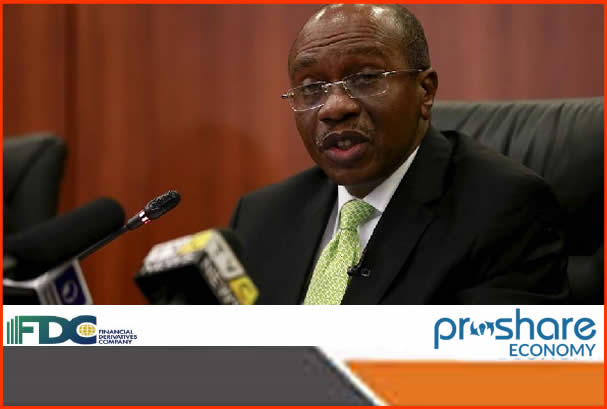Wednesday, March 23, 2016 9:02AM /FDC
The monetary policy committee in its meeting on March 20 &21 resumed its tightening cycle after a period of accommodative monetary policy. The CBN Governor cited an increase in inflationary pressures as a major factor behind the decision. He emphasized that the factors affecting inflation were more structural than transient.
The consensus view amongst analysts was for retention of the status quo. The CBN has placed emphasis on stimulating growth through increased lending to the private sector. However, the MPC decided to go along with conventional economic logic, which suggests an increase in interest rates during periods of surging prices.
This is an emphatic step taken by the MPC and is a signal of the CBN’s determination to complement fiscal policy in spurring growth. The failure to adopt a market oriented forex policy will still leave the currency vulnerable to speculative attacks in the near term. So politically volatile is the forex debate that even the president yesterday said that he believes that Nigeria’s external imbalances were temporary.
The CBN is expecting an increase in portfolio investment inflows in response to the increase in policy rate. However, a 1% p.a increase in MPR does not mitigate the possible devaluation risk to portfolio investors. Capital outflows were recorded even when the MPR was 13% p.a and the US Fed rate was 0%. Investors are still uncertain of the country’s exchange rate policy, the big elephant in the room.
The Decisions
· Raise MPR by 100 bps to 12% p.a.
· Narrow the asymmetric corridor of MPR to +200/-500bps from +200/- 700bps
· Increase CRR by 250 bps to 22.5%
· Maintain liquidity ratio at 30%
· Silent on exchange rate policy
Key Considerations
· Intense inflationary pressures: The committee stated that the factors stoking inflation were structural. The MPC highlighted increased costs of imports, exchange rate pressures, security challenges and seasonality as some of the structural factors influencing the increase in consumer prices
· Slowing economic growth
· Oil price dynamics
Impact of 100bps increase in MPR and 250bps increase in CRR
The upward adjustment in the MPR will reduce liquidity in the system. Lower liquidity will reduce the demand for dollars in the short term. However, there will be a renewed demand for dollars as soon as the budget is passed.
The price of fixed income instruments will decline. For instance, the coupon rates of bond issues priced to the MPR will change just as federal government debt cost also changes. With inflation presently at 11.4%, the policy rate return in real terms changes to positive (0.6%) from a negative value (-0.4%).
The decisions made by the MPC will increase interbank interest rates. In addition, borrowing costs will increase while banking sector profitability takes a hit, as net interest margins diminish.
Impact of decision on markets
Forex market
The pressure on the naira is expected to persist but at a reduced level. With oil prices rebounding, the effect of defending the naira on the reserves will not be as severe. The stronger cash flow will help reduce the pipeline between application for forex and allocation.
Commodity market
Given that a significant amount of commodities are imported, the exchange rate issues facing the country are also being reflected in the commodity market. Key imported commodities include wheat, raw sugar, rice and palm oil. Even commodities that are locally produced have had their prices increased as producers try to make up for lost income in other items.
Stock market
The stock market has been fluctuating and mainly driven by earnings announcements. The lack of clarity pertaining to Nigeria’s exchange rate regime is making companies uncertain about making key investment decisions. At a recent conference in Abidjan, Unilever emphasised the pains that the current exchange rate quagmire is causing manufacturing companies.
Regional context
Other African countries have also made changes in its monetary policy stance. South Africa, Egypt and Namibia increased their benchmark rates. Kenya and Ghana, on the other hand maintained the status quo on their policy stance.
Outlook
There is an increasing probability that the price level will remain stubbornly high in the short run. This is because of the possibility of wage pressure from labour. The countervailing factor is consumer resistance. An increase in aggregate output because of budgetary spending will help douse inflationary pressures. Hence, the inflation outlook for March is that prices will remain at the 11-12% range.
Related NEWS
1. CBN Communiqué No. 106 of the MPC Meeting – Mar 21-22, 2016
2. Nigeria MPC - Policy rate changes again; Increases MPR to 12%
3. MPC Meeting Preview: Confronting Stagflation
4. Little room for manoeuvre for the MPC
5. MPC Decision Review and Outlook: Growing Monetary Policy Dilemma
6. Inflation Rises to 3-Year High; GDP Growth at 16-Year Low as Risk of Negative Real Growth Looms
7. CBN Holds 249th MPC Meeting on 21st & 22nd of March 2016
8. Volatile naira pushes Inflation to 3 year high of 11.38%
9. Damned if you do, damned if you don’t; Inflation will still reflect the new rate
10. Nigeria’s Inflation Rate Rises to Double Digit; Increases by 11.4% YoY in February 2016
11. Nigeria’s GDP Grows by 2.11% in Q4’15; Lower by 0.73% from Growth Recorded in Q3’15
12. Contrasting Views on the Economy, Markets & Monetary Policy - Doyin Salami v Godwin Emefiele
13. Personal Statements of Members at the 105 MPC Meeting of Jan. 25-26, 2016
 Lagos, NG • GMT +1
Lagos, NG • GMT +1











 7004 views
7004 views





 Sponsored Ad
Sponsored Ad
 Advertise with Us
Advertise with Us









